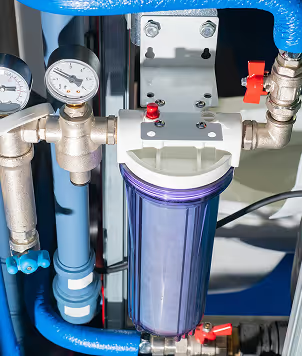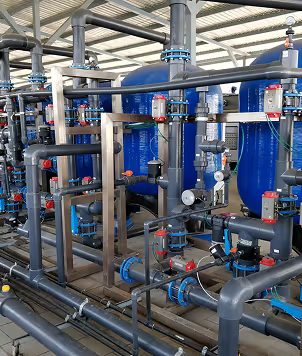Puerto Rico’s Water Quality: Progress, Challenges & the Road Ahead
June 10, 2025

Puerto Rico’s tropical climate and abundant rainfall make water a vital part of everyday life. But despite its natural resources, the island has long struggled with water quality concerns. Aging infrastructure, extreme weather events, and regulatory hurdles have created persistent challenges across the island’s water systems.
Still, with growing federal support and community-driven innovation, Puerto Rico is making strides toward more resilient, equitable water access.
Water Infrastructure & Oversight
Most of Puerto Rico’s residents—about 97%—receive their water from the Puerto Rico Aqueduct and Sewer Authority (PRASA). The remaining population relies on small, decentralized systems in rural or mountainous regions.
Unfortunately, much of the island’s water infrastructure is outdated. Many systems were built decades ago and suffer from corrosion, underfunding, and deferred maintenance. These issues contribute to service interruptions, quality violations, and rising operational costs.
Key Water Quality Challenges
1. Contaminants in Drinking Water
Some of the most common issues in Puerto Rico’s water supply include:
- Trihalomethanes (THMs): Disinfection byproducts with potential long-term health risks
- Lead and Copper: Leached from old plumbing systems
- Coliform Bacteria: Often introduced after heavy rainfall or system failures
A 2017 report by the NRDC revealed that over 70% of Puerto Ricans were receiving water from systems in violation of federal standards—the highest rate in the U.S.
2. Natural Disasters and Infrastructure Damage
Hurricanes have only intensified these challenges. Hurricane Maria in 2017 caused widespread flooding, power outages, and waterborne illnesses. Many treatment facilities were offline for weeks. Years later, some regions still suffer from the storm’s aftermath.
3. Underserved Non-PRASA Systems
Community-managed water systems, not overseen by PRASA, often lack consistent testing or proper treatment infrastructure. These smaller networks are especially vulnerable to contamination and tend to exist in economically disadvantaged or remote areas.
Signs of Progress
While the problems are significant, recent initiatives are moving the island forward:
- Federal Investment: Agencies like the EPA and FEMA have allocated billions in funding through infrastructure legislation to help rebuild and modernize Puerto Rico’s water systems.
- Better Monitoring: PRASA has improved real-time tracking of chlorine levels, system pressure, and microbial contaminants—enhancing visibility and control.
- Grassroots Action: Local NGOs and community groups are installing filtration systems, training water system operators, and encouraging rainwater collection in underserved regions.
Looking Ahead: What’s Needed
Improving water quality across Puerto Rico requires coordinated effort and long-term investment. Some of the most important strategies include:
- Modern Infrastructure Upgrades: Replacing old pipes and pumps with resilient materials and technologies
- Equity for Rural Communities: Expanding access and integrating small systems into larger regulatory frameworks
- Transparency & Accountability: Strengthening public trust through data sharing and clear water quality reporting
- Climate Resilience: Designing systems to withstand future droughts, floods, and extreme storms
How WTS Supports Reliable Water Quality
At Water Treatment Specialists, we understand the importance of resilient infrastructure and safe water delivery. Our systems help commercial and industrial facilities protect their operations and ensure compliance, even under challenging conditions.
Whether your facility needs robust pre-treatment solutions, high-performance membrane filtration, or reliable disinfection systems, we provide tailored systems backed by responsive service and expert support.
Final Thoughts
Puerto Rico’s water quality is a story of both challenge and progress. While infrastructure issues and regulatory hurdles persist, the island is finally moving toward long-term solutions—driven by investment, innovation, and a shared commitment to safe water for all.
If your business or facility is evaluating water treatment systems or planning upgrades, talk to our specialists today to learn how we can help ensure clean, consistent, and compliant water across your operations.

.svg)




.svg)